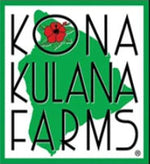From Plant to Cup: The Journey of a Kona Coffee Bean on a family-owned farm - Part 2



From Cherries to Beans

Harvested coffee cherries are promptly placed in tanks filled with water to allow them to soak. This starts the fermentation process, which loosens the husk and pulp of the cherry for easier extraction of the coffee bean through a mechanical scrubber. This technique is known as a “washed” coffee process, and is a popular processing method in the coffee industry.
However, some farmers have different processing methods in this step to tweak the flavor profile of the end cup. The green coffee beans are then placed under the sun to dry to a 12% moisture level to preserve its quality and prevent mold growth. The beans are raked several times during this procedure to ensure even drying.
Some farm locations, though, tend to be too humid for their beans to completely dry to the desired moisture level. Hence, they resort to using dryers as an alternative or alongside sun drying.
After drying, the beans are then roasted. A popular roasting method utilized is the application of indirect heat, wherein the green coffee beans are placed inside a rotating drum over a heat source. This allows the heat to slowly and evenly roast the beans and allows the roaster to precisely control the temperature throughout the process.
Different roasters, however, have their own roasting recipes that include the length and temperature of the roasting process. Changes to these variables have an effect on the flavor profile and experience of the beans once they are processed to make coffee.
The Cupping Experience

Coffee beans release carbon dioxide during the course of the tasting process. These beans must be rested for a couple days to a week to let most of the carbon dioxide to evaporate before brewing. Brewing too soon may result in a weak flavored and under-extracted cup.
This is due to the remaining carbon dioxide molecules within the beans interfering with the water during brewing, thus inhibiting the extraction of its unique flavor compounds. The degree of which coffee beans are milled greatly affects this extraction process.
This is often the reason why coffee aficionados opt for whole beans over grounded ones. Once grinded, the flavor and aromatic compounds of the beans start to be released, and the resulting cup of coffee may not be as strong as it originally is.
Kona coffee has been described to have a rich and smooth flavor profile, carrying hints of sweetness and balanced acidity. Characterized with a medium body with notes of caramel, nuts, and chocolate, it has been a beloved choice to those who have experienced its taste.
The Importance of Supporting Family-Owned Farms

Due to the small-scale production of family-owned farms, they are often susceptible to price swings and market surplus. This was especially felt during the Great Depression, World War II, and the Vietnam War, wherein the economy continuously fluctuated. There were even times in history that the cultivation of Kona coffee has been declared extinct by experts.
These small and family farms are vital to the economy and well-being of a nation. They not only support the competitiveness and sustainability of rural and farm economies, but also protect and strengthen natural resources and the environment.
Additionally, they give birth to opportunities for the development of new businesses and marketing systems, as well as maintain the population in the area. The best way to support these farms is to take part in the products they work hard to cultivate.
Buying Kona coffee beans from these local farms not only helps the community, but it also aids in preserving the heritage of coffee growing in the Kona Coffee Bell. Telling your friends, neighbors, and family about these wonderful coffee beans helps greatly in promoting it to a larger market. All while you enjoy a delectable cup of coffee!
Conclusion
For consumers, what they normally see in the shelves of shops or on their screen is a bag of enticingly aromatic coffee beans. But within the bag of beans consists a story, one filled with care, culture, and heritage.
Starting from a small seed growing into a seedling grafted to survive and grow, which then flowers and bears fruit to bright berries that are fermented and roasted to become the coffee beans we know and recognize.
A crop that struggled to survive on the island of Hawaii, now a world renowned agriculture variety recognized for its exceptional quality. Kona Coffee is certainly something not to miss, a product filled to the brim with experience and taste that will surely make you exclaim “Ono!” in delight!
References:
Giovannucci, D., & Easton-Smith, V. (2009). The case of Kona coffee, Hawaii. Guide to Geographical Indications: Linking Products and Their Origins. International Trade Centre, Geneva, 177-182.
Goto, B. (1982). Ethnic groups and the coffee industry in Hawaii.
Kinro, G. Y. (2003). A cup of Aloha: The Kona coffee epic. University of Hawaii Press.









